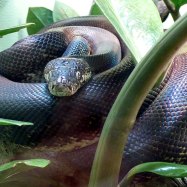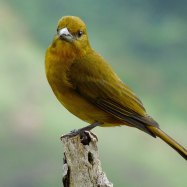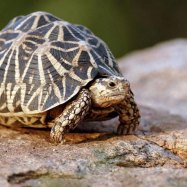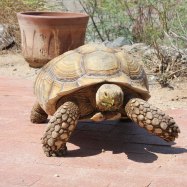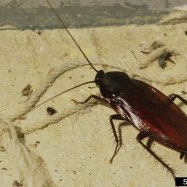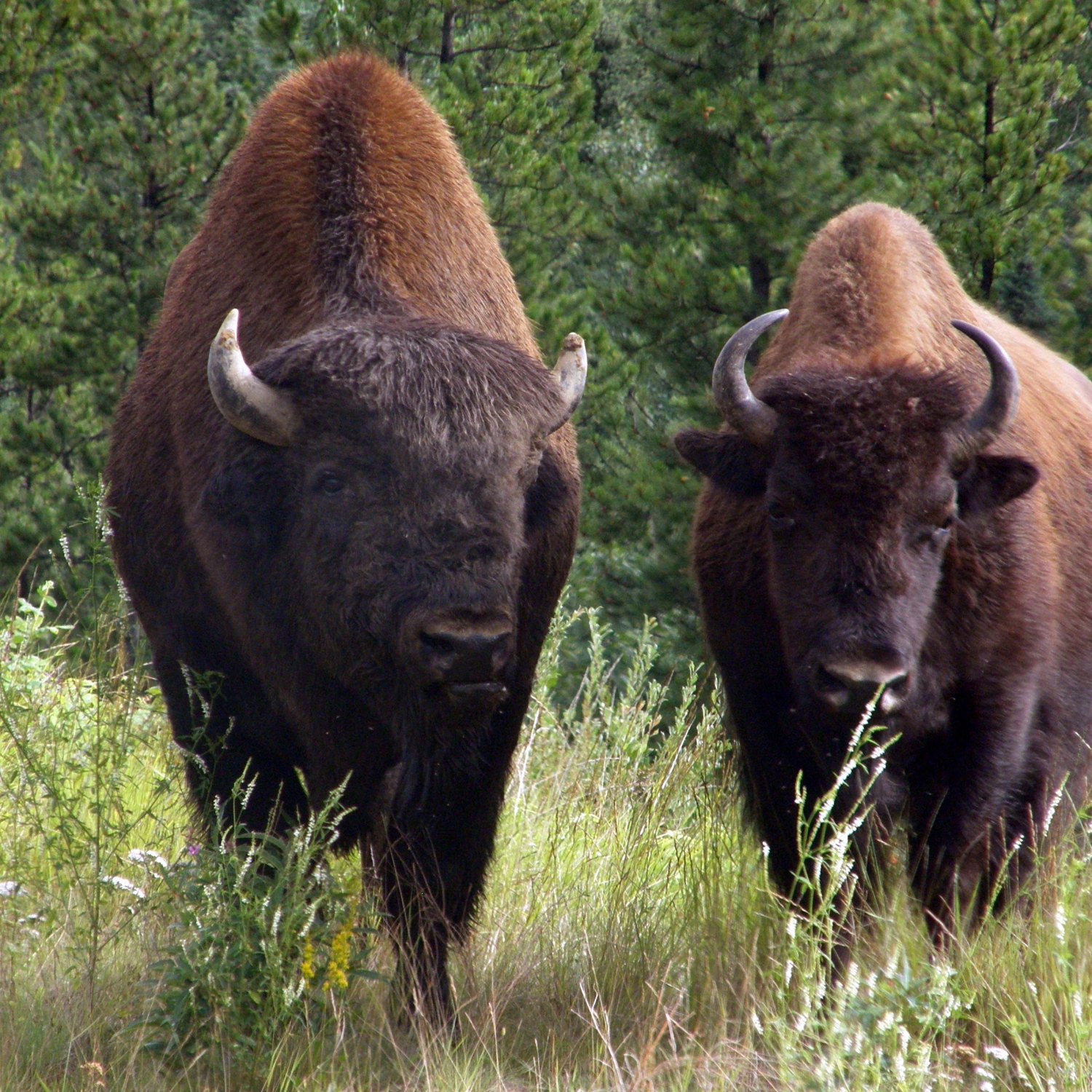
Wood Bison
2.4 - 3.5 meters
The majestic Wood Bison can be found roaming the northern reaches of Canada. With a body length of 2.4 - 3.5 meters and a large, sturdy frame, these creatures belong to the Bovidae family. Their sheer size and strength make them a sight to behold in the wild. Keep an eye out for these magnificent animals on your next trip to Northern Canada. #WoodBison #NorthernCanada #Bovidae.
Animal Details Summary:
Common Name: Wood Bison
Kingdom: Animalia
Habitat: Grasslands, meadows, forests
The Mighty and Majestic Wood Bison: Nature's Gift to the Great White North
The northern reaches of Canada are known for their pristine beauty, vast open spaces, and diverse wildlife. From the polar bears of Churchill to the beluga whales of the Arctic Ocean, the Great White North is home to some of the most iconic and fascinating creatures on the planet. Among these majestic animals, one stands out as a true symbol of strength and resilience - the Wood Bison.Known scientifically as Bison bison athabascae, the Wood Bison is also commonly referred to as the American Bison or simply the Bison Wood Bison. Its name, derived from the Greek word "bison" meaning ox-like animal, is well-suited for this magnificent creature with a strong, sturdy body and imposing presence.
The Wood Bison's Place in the Animal Kingdom
According to the Linnaean system of classification, the Wood Bison belongs to the Animalia kingdom, the phylum Chordata, the class Mammalia, the order Artiodactyla, and the family Bovidae. This places them in the same group as other bovine animals such as cows, antelope, and gazelles. However, the Wood Bison's size and strength set it apart from its relatives, making it the largest land animal in North America.Wood Bison are found in the northern regions of North America, with the majority of them residing in Canada. They are specifically well-adapted to survive in the cold and harsh climate of northern Canada, making it their natural habitat.
A Natural Habitat Unlike Any Other
Wood Bison can be found in a variety of habitats, ranging from grasslands and meadows to forests. However, they tend to favor open, grassy areas where the food supply is abundant. In the winter, they migrate to areas with less snow accumulation, and in the summer, they move to higher altitudes where the air is cooler Whiting.One of the most interesting features of the Wood Bison is their ability to survive in extreme temperatures. They can withstand temperatures as low as -50°C in the winter and remain relatively comfortable. This is possible due to their thick, double-layered coat of fur, which provides insulation and keeps them warm.
A Herbivore with an Impressive Palate
The Wood Bison is classified as a herbivore, meaning it consumes a diet solely consisting of plant matter. Their diet mainly consists of grasses, sedges, and shrubs, but they have been known to eat lichen and moss in the winter months when food is scarce.One of the Wood Bison's most remarkable features is its ability to detect the mineral content of plants. They are known to have a unique sense of taste, allowing them to differentiate between high and low-quality food. This helps them choose the most nutrient-dense plants to feed on, ensuring they get the necessary nutrients to survive in their harsh environment.
Discovering the Geographical Distribution of the Wood Bison
The Wood Bison is a purely North American animal, with its range encompassing parts of Canada and the United States. In the past, they could be found as far south as Mexico, but due to overhunting and habitat loss, they now primarily inhabit northern Canada.The largest population of Wood Bison can be found in the Northwest Territories and Alberta, with smaller populations scattered throughout northern Canada. There is also a small population of Wood Bison in the state of Alaska in the United States.
The Wood Bison's Role in Canadian History
The Wood Bison has played a significant role in Canadian history, with indigenous people using every part of the animal for survival. They used the fur for clothing, the meat for food, and the bones for tools and shelter.However, this role drastically changed in the late 1800s when European settlers came to North America. The Wood Bison was heavily hunted, with an estimated 60 million animals slaughtered for their meat, fur, and hides. By the late 1800s, they were on the brink of extinction, with only a few thousand left in the wild.
Conservation Efforts Leading to a Comeback
Thankfully, conservation efforts and strict measures put in place by the Canadian government have contributed to the Wood Bison's population recovery. Starting in the early 1900s, significant steps were taken to protect this magnificent animal, including the establishment of Wood Buffalo National Park in Alberta in 1922.The Wood Bison now has a population of approximately 10,000 individuals and is considered to be a species of "least concern" by the International Union for Conservation of Nature (IUCN). However, continued efforts are needed to safeguard this species and ensure its long-term survival.
A Glimpse into the Wood Bison's Physical Features
Along with their immense size, the Wood Bison has several other physical features that make it a truly unique animal. They have a dark brown to black coloration, with a lighter colored hair fringe around their neck and head.One of the most distinguishable features of the Wood Bison is their large, curved horns, which can grow up to 60 inches in length. Both males and females have horns, but males' horns are thicker and more pronounced. These horns are used for fighting with other bison during the mating season and for defense against predators.
A Sturdy and Powerful Body
The Wood Bison's body is built for survival in the harsh northern climate. They have a large, heavily muscled frame that allows them to dig through snow and ice to find food. They also have a thick layer of fat under their skin, providing insulation and helping them stay warm in the cold weather.On average, Wood Bison can reach a length of 2.4 to 3.5 meters and stand around 2 meters tall at the shoulder. They can weigh up to 1,100 kilograms, making them one of the largest land animals in North America.
The Significance of the Wood Bison to Indigenous Cultures
For thousands of years, indigenous people throughout Canada and the United States have relied on the Wood Bison for their livelihood and cultural practices. The bison's importance is reflected in indigenous art, music, and storytelling, where it is often depicted as a symbol of strength and resilience.Even today, the Wood Bison continues to hold cultural significance for indigenous communities. Many First Nations see this animal as a connection to their traditional way of life and a reminder of the importance of preserving the earth's natural resources.
The Wood Bison's Impact on the Ecosystem
As a large herbivore, the Wood Bison plays a crucial role in maintaining the ecosystem's balance. They help stimulate plant growth by foraging, which keeps the grasslands and meadows of northern Canada healthy and productive. They also act as an important part of the food chain, providing a valuable food source for predators such as wolves, bears, and coyotes.The return of the Wood Bison to its natural habitat has also had a positive impact on the ecosystem. Their grazing helps control the growth of certain plants, promoting biodiversity and a healthy ecosystem for other animals.
A True Canadian Icon
The Wood Bison is, without a doubt, a symbol of Canada's natural beauty and resilience. It has faced numerous challenges, from near extinction to rebuild its population, to harsh environmental conditions. Yet, it continues to thrive and adapt, embodying the spirit of the Great White North.If you ever have the opportunity to encounter a Wood Bison in its natural habitat, take a moment to appreciate the incredible strength and resilience of this majestic animal. Their comeback and continued presence in northern Canada is a testament to the importance of conservation and our responsibility to protect and preserve the wonders of the natural world.

Wood Bison
Animal Details Wood Bison - Scientific Name: Bison bison athabascae
- Category: Animals W
- Scientific Name: Bison bison athabascae
- Common Name: Wood Bison
- Kingdom: Animalia
- Phylum: Chordata
- Class: Mammalia
- Order: Artiodactyla
- Family: Bovidae
- Habitat: Grasslands, meadows, forests
- Feeding Method: Herbivore
- Geographical Distribution: North America
- Country of Origin: Canada
- Location: Northern Canada
- Animal Coloration: Dark brown to black
- Body Shape: Large and sturdy
- Length: 2.4 - 3.5 meters
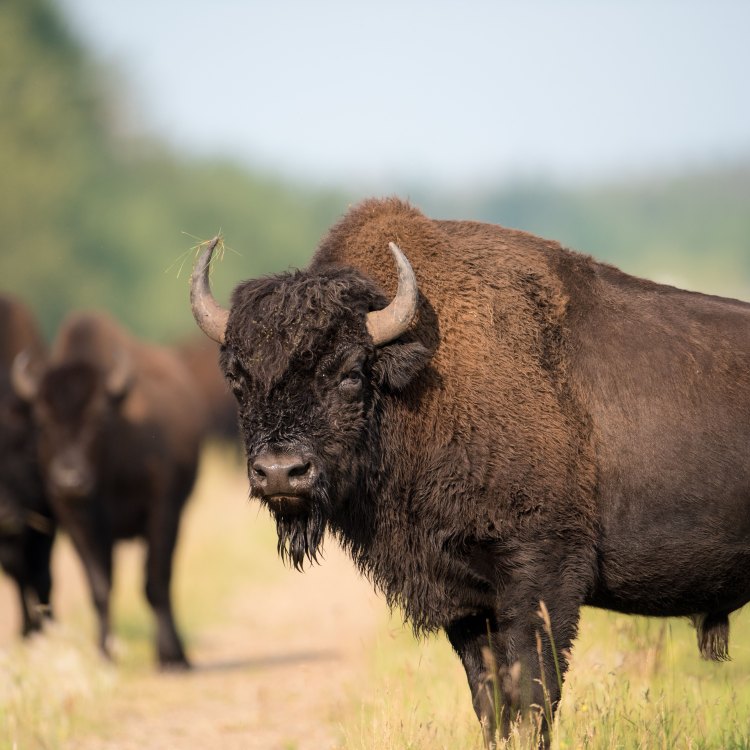
Wood Bison
- Adult Size: 1.8 - 2 meters at the shoulder
- Average Lifespan: 20 - 25 years
- Reproduction: Sexual
- Reproductive Behavior: Mating occurs in late summer to early fall
- Sound or Call: Low grunts and bellows
- Migration Pattern: Migratory
- Social Groups: Herds
- Behavior: Social and nomadic
- Threats: Habitat loss, hunting
- Conservation Status: Near Threatened
- Impact on Ecosystem: Key species in maintaining vegetation
- Human Use: Hunting, meat and hide
- Distinctive Features: Humped shoulders and large size
- Interesting Facts: The wood bison is the largest land mammal in North America
- Predator: Mainly wolves
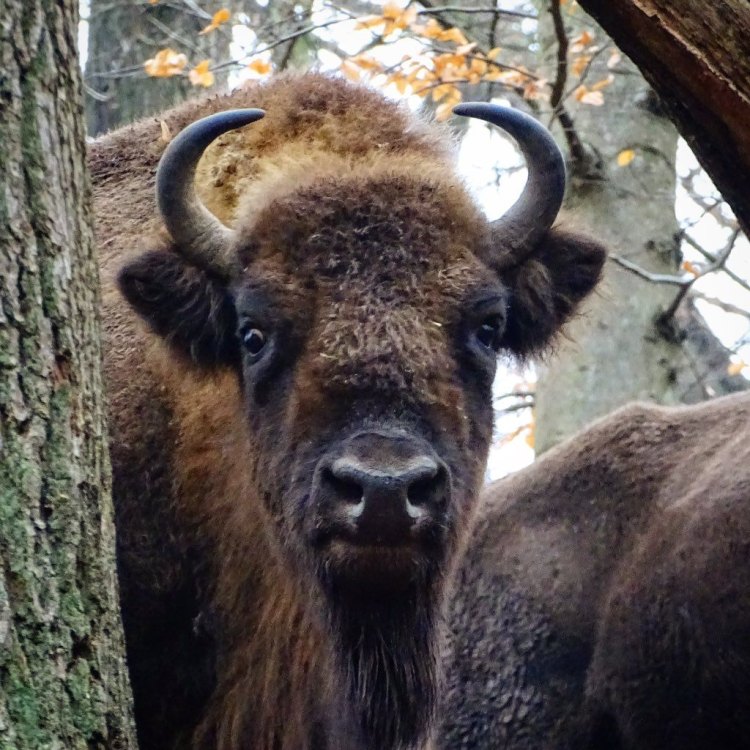
Bison bison athabascae
The Mighty Wood Bison: Discovering the Largest Land Mammal in North America
In the vast, rugged landscape of North America, there is a majestic creature that roams the land with power and grace. Standing at an impressive 1.8 - 2 meters at the shoulder and weighing up to 900 kilograms, the wood bison is the largest land mammal in North America. This magnificent creature has attracted the attention of biologists, conservationists, and nature enthusiasts alike, and for good reason PeaceOfAnimals.Com. From its unique appearance to its vital role in the ecosystem, the wood bison is a fascinating and important species that deserves recognition and protection.Size and Lifespan
The wood bison, also known as the American bison, is a large, herbivorous mammal that is native to North America. They are a subspecies of the American bison, along with the plains bison, but they are larger and more robust in size. As mentioned earlier, wood bison can reach a height of 1.8 - 2 meters at the shoulder, making them taller than a fully-grown male African elephant. Their immense size and muscular build are necessary for surviving in the harsh and often unpredictable environment of Northern Canada.
On average, wood bison have a lifespan of 20 - 25 years in the wild, with some individuals living up to 30 years. However, due to habitat loss and hunting, their lifespan has been significantly reduced in recent years. We will discuss these threats and their impact on the wood bison population later in the article Woolly Aphids.
Reproduction and Mating Behavior
The wood bison is a sexually reproductive species, meaning they reproduce through sexual intercourse. Mating usually occurs in late summer to early fall, and it is a crucial time for the species. The males, known as bulls, will compete for the attention of the females, known as cows, by butting heads and bellowing loudly. The winners of these competitions will then mate with multiple females, ensuring the survival of their genes.
Once the mating rituals are over, the female bison will carry their calf for nine months before giving birth. The calves are usually born in late spring to early summer and are small and agile, making them less vulnerable to predators. Wood bison cows can give birth to one calf every two to three years, and they are fiercely protective of their young.
Sound and Call
The wood bison is a vocal species, and they communicate with each other through low grunts and bellows. These sounds can be heard from afar and are often used to locate other members of their herd or to warn of potential dangers. Males also use these vocalizations during the mating season to attract females and establish dominance.
Migration Pattern and Social Groups
Wood bison have a migratory pattern, meaning they move from one area to another in search of food, water, and suitable habitat. During the winter, they will migrate south to take advantage of milder weather and abundant food sources. In the summer, they will return to their northern habitats where they find cooler temperatures and access to prime grazing areas.
Wood bison are social animals, and they live in groups known as herds. These herds consist of females, their calves, and yearling males, with dominant bulls roaming the outskirts of the herd. The herds can range in size from a few individuals to hundreds, depending on the availability of resources. Living in groups not only allows for better protection from predators but also helps with finding food and caring for the young.
Behavior and Threats
The wood bison is a social and nomadic species, meaning they are constantly on the move in search of food and water. They have a strong sense of community, and members of the herd will work together to find resources and protect each other. This behavior is essential for their survival in their harsh environment.
Unfortunately, the wood bison is facing some serious threats that are putting their existence at risk. The most significant threat is habitat loss due to industrial development, agriculture, and urbanization. As human populations continue to expand, it leads to the destruction and fragmentation of the wood bison's natural habitat, making it harder for them to find suitable space to live and graze.
Another major threat to the wood bison is hunting. In the past, this species faced near-extinction due to overhunting for their meat and hides. Although hunting is now regulated and monitored, illegal poaching still occurs, further reducing the wood bison population.
Conservation Status and Impact on the Ecosystem
Due to these threats, the wood bison is listed as "Near Threatened" on the International Union for Conservation of Nature's Red List. This status means that they are not currently facing extinction, but their population is declining, and they are at risk of becoming endangered if measures are not taken to protect them.
The wood bison plays a crucial role in the ecosystem as a key species in maintaining vegetation. As herbivores, they are responsible for keeping the vegetation in check, preventing overgrazing and ensuring the survival of other plant and animal species. They are also an important food source for predators, such as wolves, coyotes, and bears. Without wood bison, the balance of the ecosystem could be thrown off, leading to potential consequences for the entire ecosystem.
Human Use and Distinctive Features
Although the wood bison once faced extinction due to overhunting, humans have been utilizing this species for thousands of years. The indigenous peoples of North America have a deep connection to the wood bison, and they have been using it as a source of food, shelter, and clothing for generations. Today, hunting and ranching are still permitted for this species under regulated programs, providing economic benefits to the local communities and indigenous populations.
One of the most distinctive features of the wood bison is its humped shoulders and its sheer size. The hump on their back is made of muscle and fat, and it helps them to dig through snow to find food during the harsh winter months. They also have large, curved horns that can reach up to 66 centimeters in length, making them an imposing and beautiful creature to behold.
Interesting Facts and Main Predators
The wood bison is full of fascinating and unique characteristics that make it a remarkable species. Aside from being the largest land mammal in North America, here are a few other interesting facts about the wood bison:
- Wood bison are strong swimmers and can cross rivers and lakes to reach new grazing areas.
- They are well adapted to cold temperatures and have a thick, shaggy coat to keep them warm.
- Wood bison can reach top speeds of up to 60 kilometers per hour, making them faster than some predators.
- Their scientific name, Bison bison athabascae, comes from the Athabasca River in Canada.
The main predators of the wood bison are wolves, although they may also fall prey to other large predators such as grizzly bears and cougars. Wolves are the main predators of wood bison due to their pack hunting behavior and their ability to take down large prey. However, the wood bison's herding behavior and strong protective instincts make it difficult for predators to successfully hunt them.
In conclusion, the wood bison is a magnificent and vital species that roams the wild landscapes of North America. With their impressive size and unique features, they capture our attention and leave us in awe. However, they also face significant threats to their survival, and it is our responsibility to protect and conserve this species for future generations. Through sustainable management, responsible hunting, and conservation efforts, we can ensure that the mighty wood bison continues to thrive in the wild.
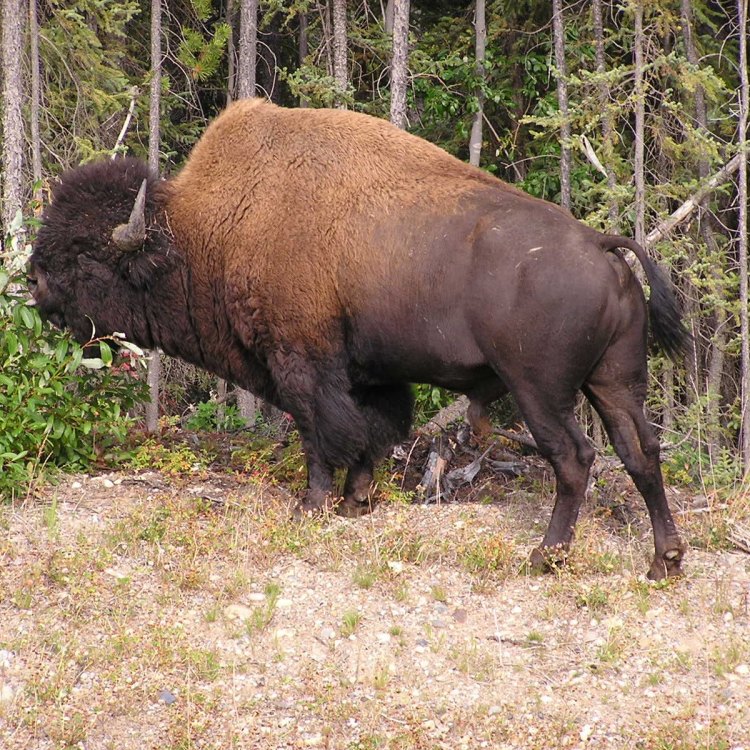
The Mighty and Majestic Wood Bison: Nature's Gift to the Great White North
Disclaimer: The content provided is for informational purposes only. We cannot guarantee the accuracy of the information on this page 100%. All information provided here may change without prior notice.

